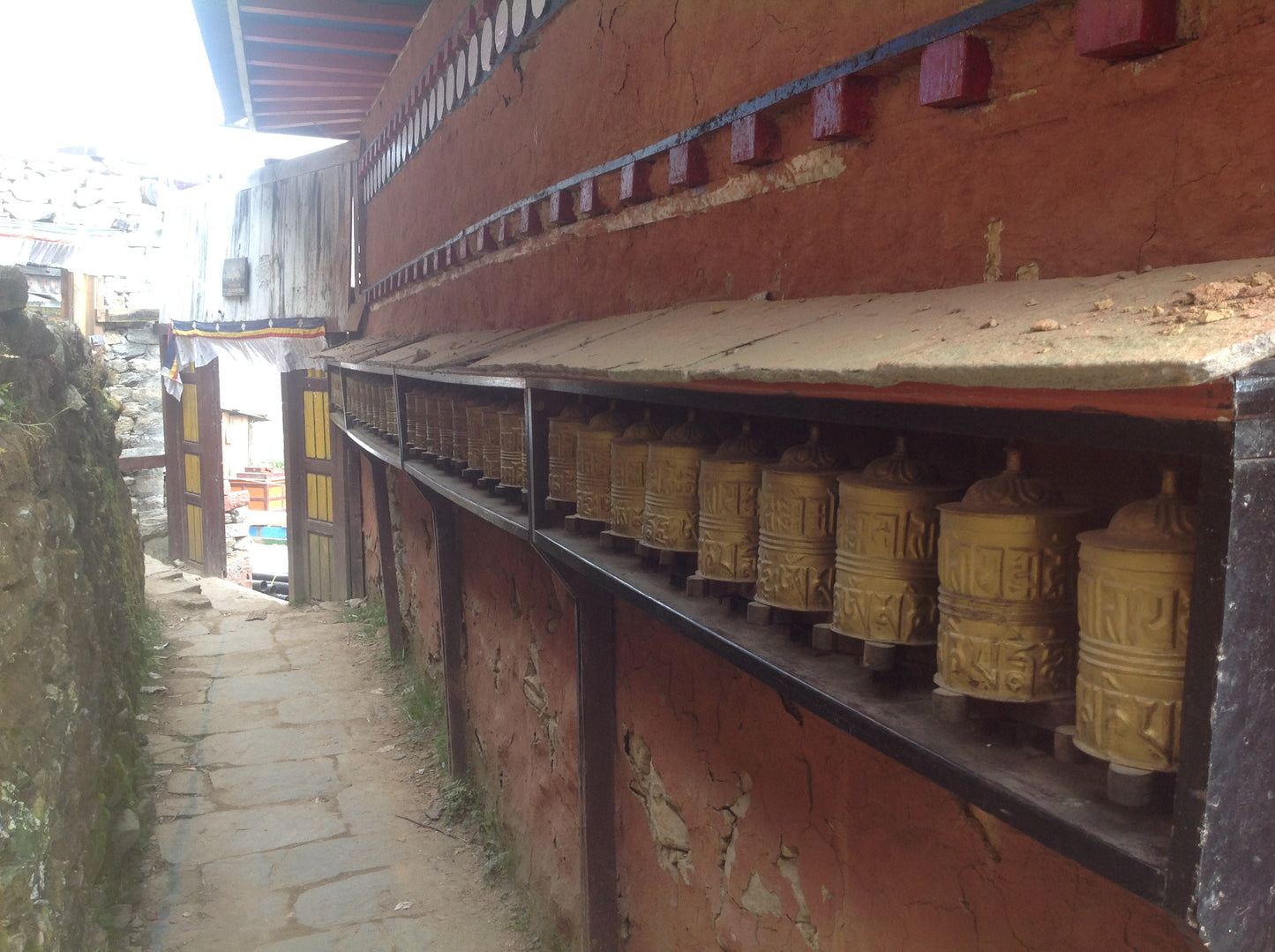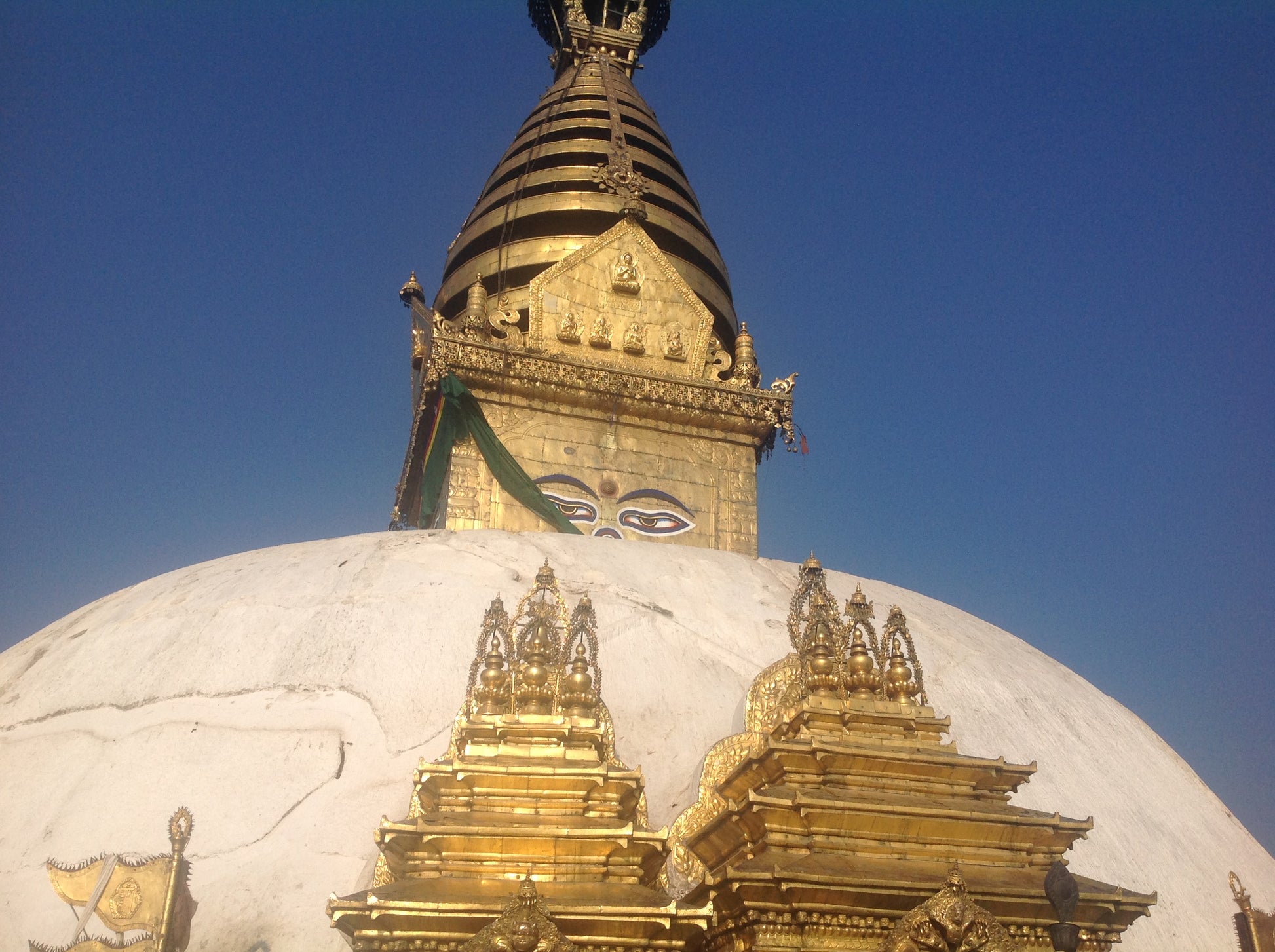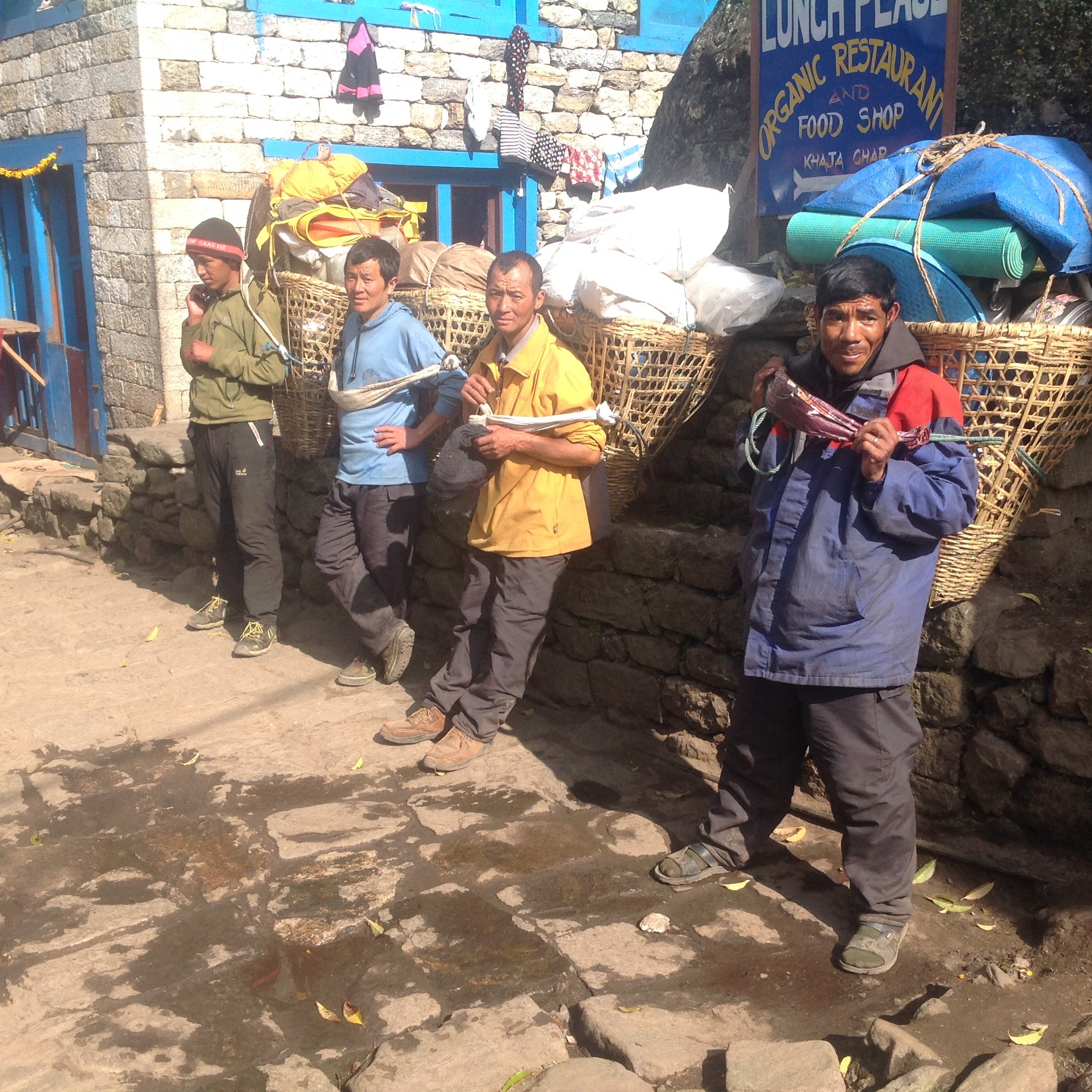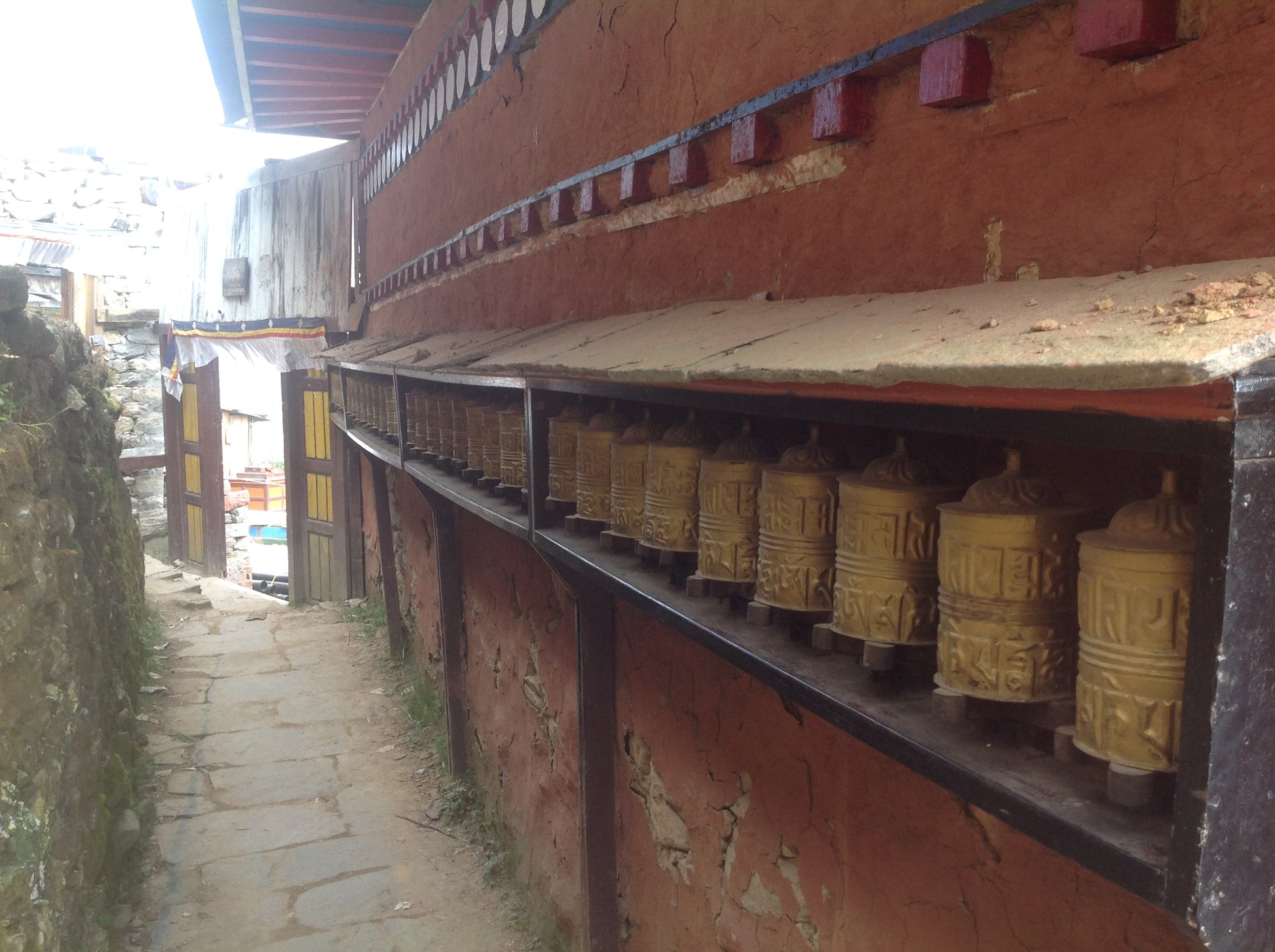Asia
Nepal
Nepal
Full Price: Varies
Couldn't load pickup availability
Nepal is a beautiful country that offers many varieties of adventure tourism activities.
Out of 14 highest peaks in the world, eight of them are located in Nepal: Mount Everest (8,848m), Kanchanjunga (8,598m), Cho Oyu (8,153m), Lhotse (8,501m), Makalu (8,475m), Manaslu (8,162m), Dhaulagiri (8,167m), and Annapurna I (8,091m). Besides these eight highest peaks of the world, there are another 1,310 mountain peaks in Nepal which are called “trekking peaks”. Nepal is truly a paradise for trekking and mountaineering enthusiasts.
Culture & Sightseeing
Nepal is a land-locked sovereign kingdom surrounded by Tibet in the north and by India to the south, west, and east. It covers an area of 151,005 square km and measures approximately 800km in length and 250km in width.
Officially Nepal is a Hindu Kingdom, but in practice Hinduism and Buddhism are mingled into a complex blend which is often impossible to separate. Small groups of Muslims and Christians are also found among the population.
Destination Options
Nepal provides a wide range of options for your trek. Learn more about the different regions below and let us know what interests you the most.
Everest Region
EVEREST GOKYO TREK
Everest Gokyo Trek is the best destination for trekkers. This trek begins at the mountain airstrip at Lukla, a one-hour flight from Kathmandu. Our destination is the high altitude lakes of Gokyo at over 4,200 meters. Less frequented than the Everest Base Camp route, the trek provides some tremendous high-altitude trekking and a visit to the second largest glacier in the world. From the top of Gokyo, there are some spectacular mountain views, including Everest. We return to Lukla and our flight back to Kathmandu.
EVEREST BASECAMP TREK
The trek to Mount Everest Base Camp continues to be one of our most rewarding journeys. You will have a day to explore the exotic city of Kathmandu before flying into the remote mountain town of Lukla (9,350 feet) to begin our trek into the Khumbu region of the Himalayas. The views of the Himalayan mountains from Lukla on a clear day are breathtaking. We follow an ancient route that will take us through tiny villages, across high mountain passes, and through remote valleys, villages, and monasteries. The views grow even more spectacular as we venture up the Dudh Kosi River to Namche Bazaar, the gateway to the Khumbu region at 11,300 feet.
We will spend a night next to the Thyangboche monastery (12,887 feet), where you will be rewarded with spectacular views of Ama Dablam, Mount Everest, and Lhotse. A non-technical climb of Kala Pattar (18,450 feet) highlights the truly spectacular panorama of Sagamartha, the Mother Goddess of the World (Mount Everest, 29,028 feet), and Lhotse (27,560 feet).
Spending the better part of two days at Everest Base Camp will give us plenty of time for exploring the base of the tallest mountain in the world! The return trek continues to delight adventurous souls with more spectacular mountain views, lush forested valleys, and opportunities to learn about the Nepalese religion and culture.
Annapurna Region
ANNAPURNA SANCTUARY TREK
One classic trek in the Annapurna region is to the Annapurna sanctuary; the site of the base camp is used by expeditions attempting the massif south face of Annapurna I.
The trek combines some of the most spectacular Himalayan scenery with a fascinating insight into the life of middle hill Nepalese. Spend at least one full day inside the sanctuary; side trips across the south Annapurna glacier and north Annapurna base camp allow for an even better appreciation of this unique place. Anytime, trekkers must beware of snowfall and avalanches that can block the narrow entrance to the sanctuary.
ANNAPURNA CIRCUIT TREK
Another classic trek in the Annapurna region is definitely the Annapurna circuit. The complete circuit has only been possible since 1980s when the Manang area was authoritatively opened to foreigners. For an all-round experience of the scenery and cultures of Nepal, this trek has a lot of attraction. During the winter season, orange trees are laden with fruit and fragrant frangipani blossoms caste their sent along the trail. As you travel higher, the valley becomes more rugged until the village and forests finally way the arid hills of Manang.
This is a challenging trek that is not without some risks. The crossing over Thorong La can be dangerous at times, especially during the unanticipated snowfall. Therefore, trekkers must have to make sure that they are well prepared.
Langtang Region
LANGTANG GANJALA PASS TREK
The Ganjala Pass is one of the most challenging passes in Nepal. This wedge in the Himalaya is situated at an altitude of 5,160m. Our Langtang trek takes you over this pass as you make your way south from Langtang village, which lies at 3,500m and where the national park headquarters is located. The route from Gyang in Helambu requires crossing the 5,106m Ganja La. The pass is blocked by snow, so local inquiries about its condition, good equipment and mountaineering experience are necessary for safe crossing. The Helambu village excludes a Tibetan feel and you will see fields enclosed by stone walls as well as herds of yaks, the most important animal for the local people. From Tarke Gyang, we descend to Melamchi Khola before climbing to Pati Bhyanjyang, then trek down to Sundarijal; from here we drive back to Kathmandu.Dhaulagiri Region
ROYAL DHAULAGIRI TREK
A remote and challenging trek for the more adventurous walker circles – Dhaulagiri, the seventh highest mountain in the world. Its name means “white mountain”; towering in solitary splendor, this magnificent peak rises as a giant shoulder of shining ice and snow. Dhaulagiri is rarely visited, and the valleys and villages surrounding it are unspoiled and unchanged. Our trek takes us across the Kali Gandaki River and then north into the heart of the massif; from the base camp we come to the high point of our trek, the traverse of French Pass (5,360m), the hidden Valley and Dhampus Pass (5,182m), a high level route which brings us back to the upper Kali Gandaki Valley in Jomsom. From here we, either, fly back to Kathmandu via Pokhara or we can continue from Jomsom till Birerthaqnti or to Pokhara.
Mustang Region
MUSTANG TREK
The Mustang region is a mostly arid and Tibet-like region at the northern end of the Kali Gandaki Valley. The Kali Gandaki River has the deepest gorge of the world. Mustang has a long, rich, and complex history that makes it one of the most interesting places in Nepal. Part of it is still restricted and is still known as “The Forbidden Kingdom”.
Rich in its culture and tradition, Mustang is the only district in Nepal that has its own king. House and temples constructed throughout the region uses some stone, but mostly sun-baked mud bricks. The city wall and the four-story palace in Mustang are something that no one should miss.
Kanchanjunga Region
KANCHANJUNGA BASE CAMP TREK
Kanchenjunga (8,586m), the third highest peak, is where the name of this region is derived from. It falls in the eastern Nepal which also includes Makalu Base Camp. There is endless variety in this part of the country. Most ethnic groups are represented and many beautiful villages such as Dhankuta, Khandbari, and Bhojpur are prosperous and clean.
Treks in this area tends to be more expensive since we will have to organize all the trekking gear and food from Kathmandu and fly all the way to this region. The treks are longer, as it takes at least two weeks just to reach the high mountain areas. But it is very rewarding and unforgettable.
Dolpo Region
DOLPO TREK
Dolpo is located in the Phoksundo National park of mid-western Nepal, behind the Dhaulagiri massif and towards the Tibetan plateau, cut off by a series of very high passes and closed by the snow most of the year. Dolpo remains a truly isolated corner of Nepal. Time has stood still here for centuries as inhabitants of Tibetan stock continue to live, cultivate, and trade the way they have done since time immemorial. The finely preserved ecosystem encompasses a wild and wonderful variety of plants and wildlife, including the blue sheep and snow leopard, and magnificent views including Mount Dhaulagiri (8,167m.). A trek through Dolpo is an experience not easily forgotten; an enchanting trek in this region by Peter Matthiessen gave birth to his masterpiece Snow Leopards, a spiritual novel and one of his best-sellers. A trek of this region is recommended for groups on basis of full board organization.
North Gorkha Region
NORTH GORKHA TREK
Introduced by some of the reputed trekking agency by demand of clients from 2001, this splendid and easily accessible trek should become very popular. Completely unspoiled, it includes some of the most varied and rewarding trekking in the kingdom, through an area between the Dorandi Khola and Buri Gandaki.
Starting from the old capital of Gorkha, our route climbs atop a hill overlooking the snowy peaks of the Himalaya and where the old royal palace known as Gorkha Durbar towers ovrer the bazaar. Descending through terraced fields, we pass by Khanchok and climb across a forested area to our highest point at Darchye (3,220m). From there, we have a superb panorama of more than twenty high peaks such as Ganesh Himal, Sringi Himal, Buddha Himal, Himalchuli, and Manaslu. Our route descends through rhododendron forests and high pastures towards the Soti Khola on the Manaslu circuit route before ending at Arughat.
Rolwaling Region
ROLWALING KHUMBU TREK
We begin our journey with a scenic drive on the Kathmandu-Lasha Highway to the ancient trading town of Dolka. Our journey through one of the most beautiful parts of Nepal starts here. We trek through the Rolwaling Valley, celebrated as one of the seven hidden valleys in the Himalayan, past beautiful Sherpa and Tamang villages. Rolwaling is the east-west valley below Gauri Shanker (7,145m) just south of Tibetan border.
Beding and Na are the last Sherpa villages of this valley, where more than 20 good Sherpa climbers have conquered Mount Everest and numerous other 8,000m peaks. We cross over the Tashi Lapcha pass (5,755m), visit Thame (Tenzin Norgay’s hometown), and enter the Khumbu Valley, the land of the Sherpas which lies at the foot of Everest. Great views of Mount Gauri Shanker, Mount Dorje Lakpa, and Mount Tashi Lapcha are all along the trail. This trek also offers a great opportunity for short climbs of peaks like Ramdong Go (5,930m) and Pharchamoro (6,187m).
This trek, being strenuous, requires technical climbing experience and good mountaineering gear.

















Collapsible content
ITINERARY
EQUIPMENT

















